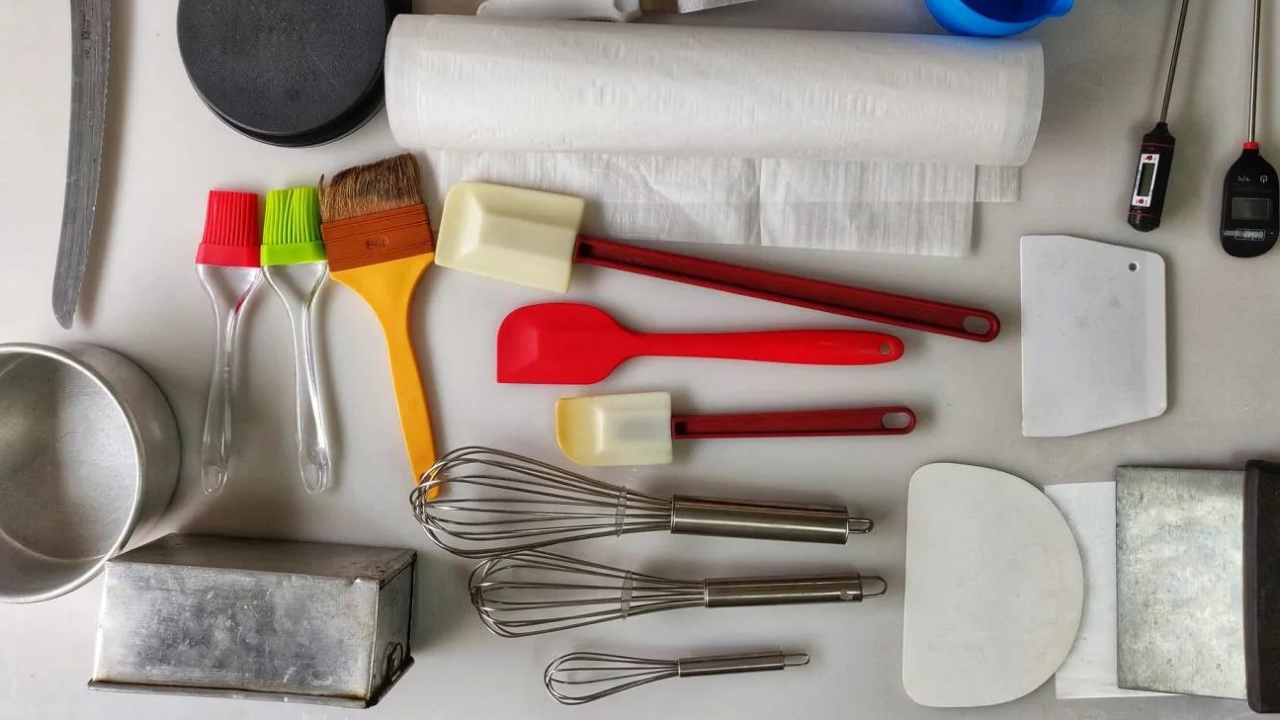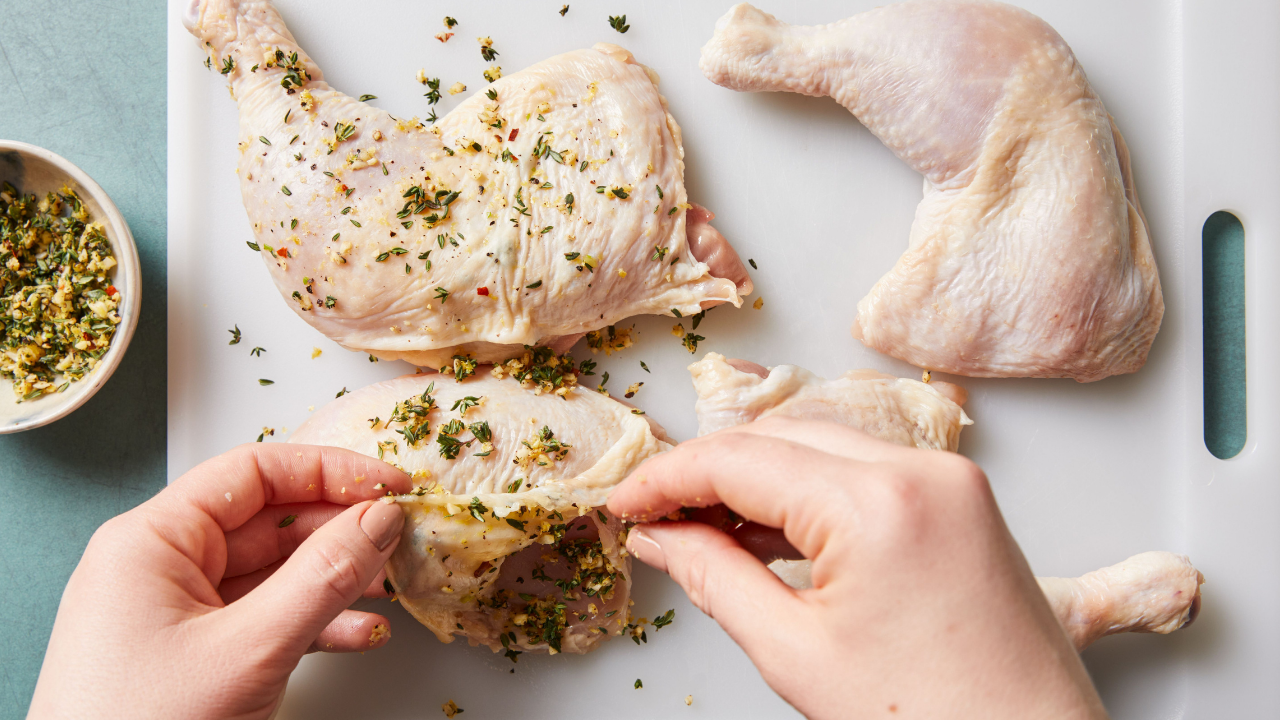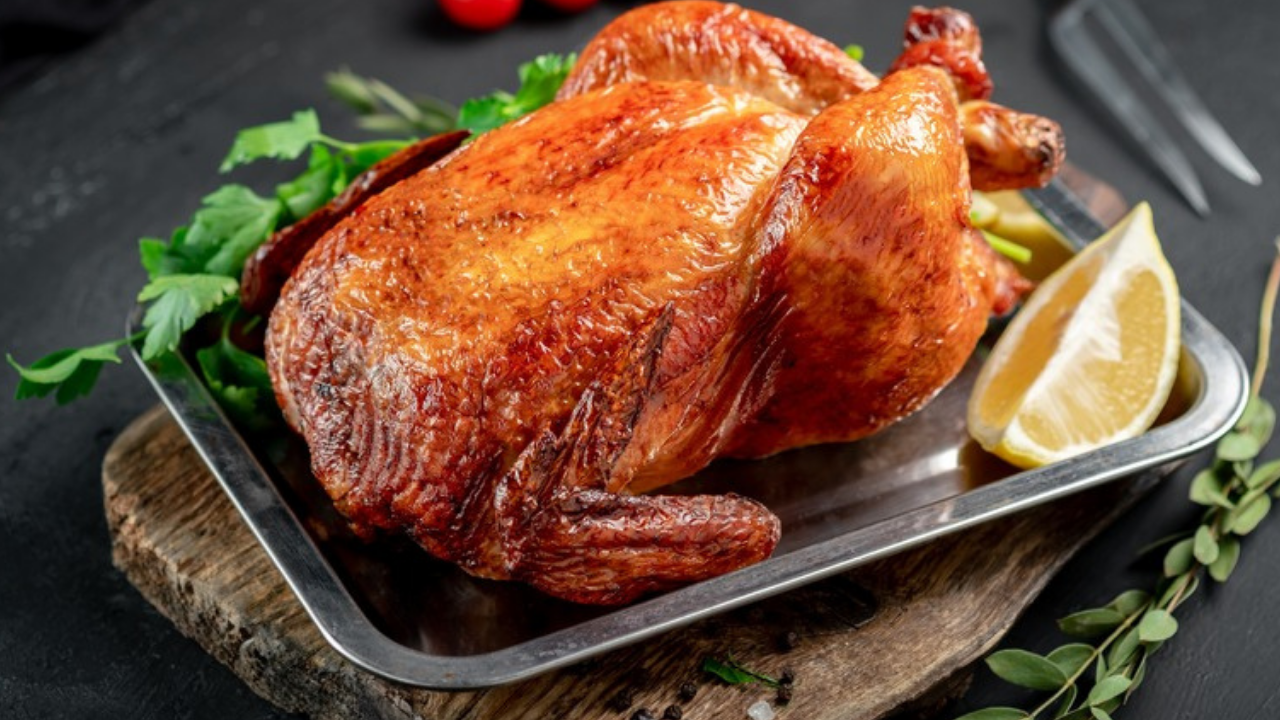Chicken stands as one of the most beloved and versatile ingredients across global cuisines. Its popularity isn’t merely based on taste; it offers a plethora of nutritional benefits and an ease of preparation that makes it a staple in households worldwide. High in protein and relatively low in fat, chicken provides essential nutrients such as B vitamins, iron, and zinc, which contribute to a balanced diet.
The appeal of chicken goes beyond its nutritional value. Its adaptability to various cooking methods makes it a canvas for flavors and textures from around the world. Whether grilled, baked, roasted, or fried, chicken can be prepared in countless ways. It takes on the flavors of marinades, seasonings, and sauces exceptionally well, allowing for a wide range of culinary creativity.
Beyond the traditional methods, modern techniques such as sous-vide and air frying have opened new horizons for preparing chicken. Each method offers unique textures and flavors, from the crispy exterior of fried chicken to the moist, tender qualities achieved through baking. Its versatility ensures that it is equally at home in a comforting bowl of chicken soup as it is in an exotic chicken curry, showcasing its cross-cultural culinary appeal.
Moreover, chicken’s ability to be paired with a diverse range of ingredients—from fresh herbs and citrus to bold spices and rich sauces—adds to its role as a kitchen staple. This adaptability not only caters to various palates but also adheres to different dietary needs and preferences, making it an ingredient that fits into numerous cooking styles and dietary restrictions.
In summary, chicken’s combination of nutritional benefits, ease of preparation, and versatility in absorbing flavors and textures make it a fundamental component in kitchens around the globe. Whether you are a novice cook or an experienced chef, the potential for creating a perfect chicken dish is vast, limited only by your imagination.“`
Choosing the Right Chicken
When embarking on the journey to cook the perfect chicken recipe, selecting the right type of chicken is crucial. The market offers various options, including free-range, organic, and conventional chickens, each with its distinct attributes in taste, texture, and nutritional value.
Free-range chickens are allowed more space to move around, leading to a slightly firmer texture and richer taste due to their active lifestyle. Additionally, they often benefit from a varied diet, which can enhance their flavor profile. Organic chickens take it a step further. They are not only reared in free-range conditions but are also fed organic feed and are raised without synthetic additives or antibiotics. This adherence to strict organic farming standards means organic chickens often boast superior nutritional value, including higher levels of omega-3 fatty acids and antioxidants.
On the other hand, conventional chickens are typically raised in controlled environments with readily available food and water. While they are generally more affordable, they might lack the depth of flavor and nutritional benefits found in their free-range or organic counterparts.
To select the freshest chicken, close attention to certain characteristics is vital. Firstly, the color of the chicken should be a pale pink, indicating freshness, with no discoloration. The skin should be moist but not slimy, and any off-putting sulfur-like smells should be absent. Pay special attention to the packaging as well; it should be intact and well-sealed to prevent contamination.
When choosing the right chicken, understanding these differences helps in making an informed decision that aligns with your taste and nutritional preferences. Whether you opt for conventional, free-range, or organic, ensuring freshness through careful inspection will set the stage for crafting a delectable chicken recipe.
Essential Tools and Equipment

Cooking the perfect chicken recipe starts with having the right tools and equipment. Each item in your kitchen play a vital role in ensuring that your dish is prepared efficiently and turns out delicious. Here’s a list of essential tools and equipment you’ll need:
Sharp Chef’s Knife: A reliable, sharp chef’s knife is indispensable in the kitchen. Whether you’re trimming fat, deboning, or slicing the chicken, a good knife allows for precision and safety. The sharp blade ensures clean cuts, reducing the risk of tearing meat, which can impact the texture and presentation of your dish.
Cutting Board: A sturdy cutting board is essential for preparing chicken. Opt for a board that is large enough to accommodate a whole chicken and easy to sanitize. Wooden or plastic cutting boards are popular choices, but ensure that whichever you choose is non-slip to provide stability while cutting.
Meat Thermometer: Cooking chicken to the correct temperature is crucial for both safety and taste. A meat thermometer allows you to accurately measure the internal temperature, ensuring your chicken is cooked to perfection without being under or overcooked. The ideal internal temperature for cooked chicken is 165°F (75°C).
Roasting Pan: If you plan to roast your chicken, a high-quality roasting pan is necessary. Look for one with a rack to elevate the chicken, allowing heat to circulate evenly around the meat. This promotes even cooking and helps achieve a crispy, golden-brown skin.
Skillet: A versatile skillet, preferably cast iron or stainless steel, is perfect for searing chicken. The heavy base ensures even heating, which is essential for getting a good sear on the meat. Skillets are also great for stovetop-to-oven transitions, allowing for seamless cooking of various chicken recipes.
In conclusion, having the right tools and equipment streamlines your cooking process and significantly enhances the quality of your chicken dishes. Investing in these essential kitchen items will not only make preparation easier but also ensure that your chicken recipes are consistently delicious and well-executed.
Preparing Chicken for Cooking

Effective preparation is crucial for achieving the perfect chicken recipe, and this begins with proper cleaning and handling. First, ensure the chicken is thoroughly washed under cold running water to remove any surface bacteria. While it is critical to clean the bird, some experts argue that washing can spread bacteria around the kitchen. Thus, it is essential to sanitize all surfaces immediately after cleaning the chicken.
Once washed, pat the chicken dry with paper towels. Trimming excess fat and any remaining feathers is the next step. If your recipe calls for it, deboning is an essential skill to master. Use a sharp, flexible knife and make sure to remove the keel bone, wishbone, and rib bones carefully, preserving as much of the meat as possible.
For enhanced flavor and tenderness, marinating the chicken is highly recommended. A basic marinade consists of acid (such as lemon juice or vinegar), oil, and seasonings. The acid helps to tenderize the meat, while the oil ensures that the flavors of the added spices penetrate thoroughly. Combine these elements with aromatic herbs, garlic, ginger, or soy sauce to create a variety of marinade profiles.
Seasoning is another cornerstone of a perfect chicken recipe. Salt is the primary seasoning, enhancing the chicken’s natural flavors. Combining salt with other spices and herbs, like paprika, thyme, rosemary, or cumin, customizes the flavor profile. Letting the chicken marinate for at least 30 minutes—though several hours or even overnight is even better—will significantly impact the final taste.
To sum up, meticulous preparation, from washing and trimming to marinating and seasoning, is essential for creating the perfect chicken dish. Each of these steps contributes to tender, flavorful chicken that forms the basis for any exceptional chicken recipe.
Different Cooking Methods
Cooking chicken can be accomplished through a variety of methods, each offering its unique advantages and suited for specific types of dishes. By understanding the nuances of each cooking technique, you can effectively choose the method that yields the best results for your chicken recipes.
Baking
Baking is a popular method for cooking chicken as it allows for even heating. Typically, chicken should be baked at 375°F (190°C) for 25-30 minutes per pound, ensuring the internal temperature reaches 165°F (74°C) for safety. The benefits of baking include the ability to add various seasonings and marinades, resulting in tender, flavorful chicken. However, over-baking can lead to dryness, so careful monitoring is essential.
Grilling
Grilling is ideal for those who crave a smoky flavor and crispy skin. It’s best suited for chicken cuts like breasts, thighs, and wings. Preheat the grill to medium-high heat and cook chicken for about 6-7 minutes per side, depending on thickness. One downside is the risk of uneven cooking or charring, but this can be mitigated by using a meat thermometer to ensure doneness.
Frying
Frying delivers a deliciously crispy exterior while maintaining a juicy interior, making it perfect for chicken tenders, wings, and fried chicken recipes. Opt for an oil with a high smoke point, such as vegetable or peanut oil, and maintain oil temperature around 350°F (175°C). Despite its indulgent taste, frying can be unhealthy due to the added fats and calories. For best results, ensure even breading and avoid overcrowding the pan to maintain temperature.
Poaching
Poaching involves gently simmering chicken in water or broth, which results in incredibly moist and tender meat. Ideal for dishes requiring shredded chicken, poaching is also a healthier cooking method as it adds minimal fats. Simmer chicken in a covered pot for 15-20 minutes, ensuring the liquid stays below boiling. While it may lack the bold flavors of other methods, poaching preserves the chicken’s natural taste and moisture effectively.
Slow Cooking
Slow cooking is perfect for creating rich, savory dishes without the need for constant supervision. Place chicken and ingredients in a slow cooker, set it to low, and cook for 6-8 hours or on high for 4-5 hours until tender. This method excels in developing deep flavors and is suitable for soups, stews, and pulled chicken dishes. However, slow cooking can sometimes result in overly soft textures if not monitored properly.
By mastering these various cooking methods, you can ensure your chicken dishes are flavorful, moist, and perfectly cooked, no matter the recipe you choose.
Classic Chicken Recipes
Earning the status of classics in any culinary tradition, these chicken recipes provide a solid foundation for any home cook’s repertoire. These centuries-long favorites are timeless for good reason: They balance simplicity with flavor, ensuring that even novices can achieve satisfying and delicious results.
Roast Chicken
The quintessential roast chicken is a must-know recipe. Originating from various culinary traditions across the globe, it requires only a handful of ingredients: a whole chicken, olive oil, lemon, garlic, rosemary, thyme, salt, and pepper. Preheat the oven to 425°F (220°C). Prepare the bird by patting it dry, seasoning it generously inside and out, and stuffing it with aromatics like lemon slices and herbs. Rub the skin with oil and roast for about 1.5 to 2 hours, depending on its size. The result is a golden, crispy exterior and juicy, flavorful meat.
Chicken Stir-Fry
A quick, versatile dish hailing from Asian cuisine, chicken stir-fry can be prepared in under 30 minutes. Essential ingredients include chicken breasts, soy sauce, ginger, garlic, bell peppers, broccoli, and other seasonal vegetables. Heat a wok or large skillet over high heat, add oil, and stir-fry the chicken until golden brown. Add chopped vegetables and cook until tender-crisp. Finish with a well-balanced sauce composed of soy sauce, cornstarch slurry, and a touch of honey or sugar. Serve over steamed rice or noodles.
Chicken Curry
Delving into the realm of aromatic spices, chicken curry is a global favorite with numerous regional variations. A basic version requires chicken thighs, onions, tomatoes, garlic, ginger, and a medley of spices including curry powder, turmeric, cumin, and coriander. Sauté the aromatics until fragrant, then add the spices and cook briefly before incorporating the chicken and tomatoes. Simmer until the meat is tender and the flavors meld together. Serve with rice or naan bread.
Grilled Chicken Breast
An ideal recipe for healthy eating, grilled chicken breast is both nutritious and flavorful. Common ingredients include boneless, skinless chicken breasts, olive oil, lemon juice, garlic, salt, and pepper. Marinate the chicken for at least 30 minutes before grilling. Preheat the grill to medium-high heat and cook the breasts for 6-7 minutes per side, ensuring to achieve well-defined grill marks. The outcome is juicy, tender chicken perfect for salads, sandwiches, or a simple dinner plate.
Chicken Soup
A staple comfort food, chicken soup is cherished worldwide for its soothing qualities. The primary components include chicken thighs or a whole chicken, carrots, celery, onions, garlic, and herbs such as thyme and bay leaves. Begin by creating a rich broth through slow simmering the chicken with vegetables and aromatics. Strain the stock and shred the chicken, returning the meat to the pot alongside fresh vegetables. Simmer until all ingredients are tender. The result is a hearty, soul-warming dish.
These classic chicken recipes embody the versatility and universal appeal of this popular protein. Whether it’s for a weeknight dinner or a special occasion, mastering these dishes will ensure culinary success.“`html
Flavor Combinations and Pairings

Creating a delectable chicken dish often hinges on the strategic pairing of flavors that enhance its natural taste. Chicken is a versatile protein that can be paired with a variety of ingredients to craft balanced meals that cater to an array of palates. Among the popular flavor combinations for chicken are lemon and herb, spicy and tangy, and savory and sweet.
Lemon and herb combinations create a fresh and vibrant flavor profile. Lemon’s acidity cuts through the richness of the chicken, while herbs like rosemary, thyme, and oregano provide aromatic depth. Such pairings are excellent for grilled or roasted chicken. To complement this flavor, consider side dishes like a light arugula and fennel salad or a quinoa salad with cherry tomatoes and cucumbers. A simple olive oil and lemon vinaigrette can enhance the overall freshness.
For those who enjoy a bit of heat, spicy and tangy combinations offer an exciting twist. Marinades or rubs incorporating ingredients like chili powder, cayenne pepper, and lime juice create a zesty and bold flavor. This pairing works well with grilled chicken wings or tacos. Complement these dishes with a cooling avocado and cilantro slaw, or a refreshing mango salsa, which helps balance the spiciness.
Another beloved flavor pairing is savory and sweet, which balances rich and bold tastes with subtle sweetness. Ingredients like honey, maple syrup, or fruit preserves work wonderfully with garlic, soy sauce, or balsamic vinegar. This combination is particularly popular in slow-cooked or glazed chicken recipes. Accompany these dishes with roasted vegetables like carrots and Brussels sprouts, or a wild rice salad with dried cranberries and pecans to add texture and further layers of flavor.
Appropriately pairing chicken with complementary side dishes, sauces, and salads not only enhances the primary flavors but also provides a well-rounded and satisfying meal experience. Whether you’re preparing a simple weeknight dinner or a festive gathering, understanding these classic flavor combinations ensures your chicken dishes are always a culinary delight.“`
Troubleshooting Common Chicken Cooking Issues
Cooking the perfect chicken can sometimes present challenges, including dryness, lack of flavor, or uneven cooking. Identifying these common issues is the first step to elevating your chicken dishes to a higher standard. Many cooks encounter dryness in their poultry, primarily due to overcooking. To avoid this, use a meat thermometer to ensure the internal temperature of the chicken reaches 165°F (74°C). This method guarantees juiciness without worry of undercooking.
Another frequent problem is the bland taste, which often results from inadequate seasoning or marinating. Opt for brining your chicken in a saltwater solution for several hours before cooking. This process infuses moisture and flavor, rendering the chicken more palatable. Additionally, consider incorporating robust herbs and spices into your marinades or rubs. Ingredients like garlic, rosemary, thyme, and lemon zest can significantly enhance the flavor profile of the chicken.
Uneven cooking is a dilemma stemming from inconsistent thickness, where certain parts of the chicken cook faster than others. This issue is notably prevalent in bone-in pieces. One remedy is to butterfly the chicken, ensuring an even thickness throughout. When dealing with bone-in cuts, sear them on the stovetop first to kickstart the cooking process before transferring them to the oven. This technique promotes even cooking while maintaining a crispy exterior.
Proper chicken preparation also includes attentive cooking techniques tailored to the type of chicken you’re preparing. For instance, using high heat initially can help sear and lock in juices, while lowering the temperature thereafter ensures thorough cooking without excessive drying. Experiment with different methods such as baking, grilling, and slow cooking to determine what works best for your particular dish.
By understanding and addressing these common cooking problems, you can enhance your strategies and boost your confidence in the kitchen. Implement these practical solutions to elevate your chicken dishes, ensuring each meal is flavorful, juicy, and evenly cooked.
Conclusion
Cooking the perfect chicken is both an art and a science, and with the right techniques and tips, anyone can achieve delicious results. From selecting the freshest ingredients to mastering various cooking methods, this guide has equipped you with the knowledge to elevate your chicken dishes to new heights.
If you have any questions or concerns about our Article, please reach out to our support team. We’re here to help you!










I together with my friends were checking the nice ideas from your site and then quickly I got a horrible suspicion I never expressed respect to the blog owner for those strategies. All of the women happened to be so joyful to learn them and have in effect simply been taking pleasure in them. Appreciate your turning out to be really helpful and then for making a decision on varieties of perfect subjects millions of individuals are really desperate to understand about. Our own honest apologies for not expressing appreciation to earlier.